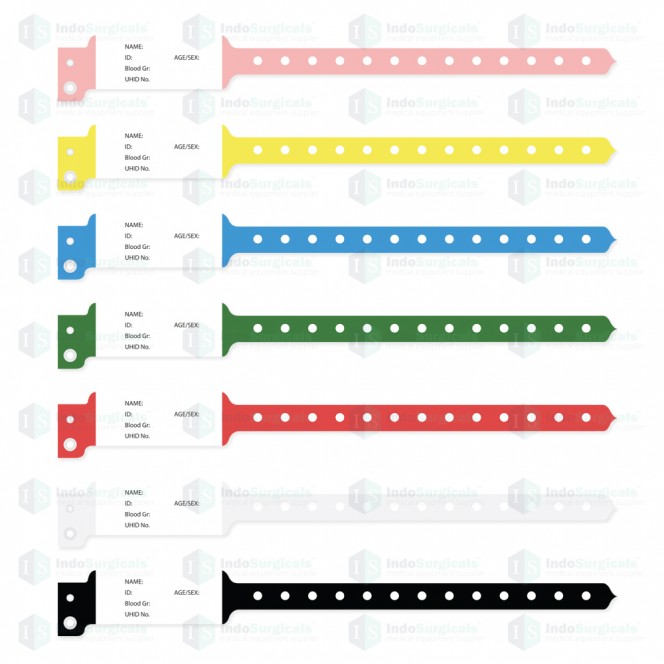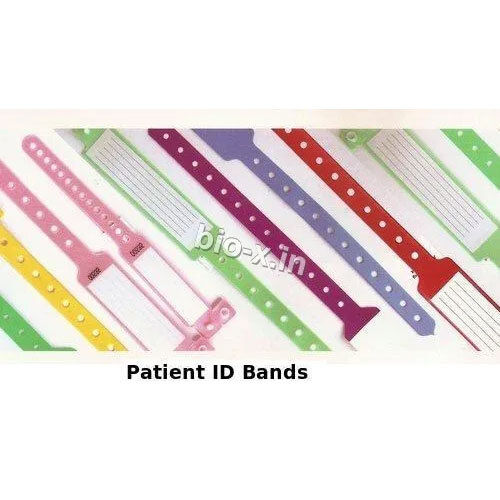The Connection Between a Patient Identification Band and Enhanced Patient Privacy
The Connection Between a Patient Identification Band and Enhanced Patient Privacy
Blog Article
Discovering the Various Sorts Of Patient Identification Band Made Use Of in Medical Facilities
In the complex world of health care, the critical role of Patient Identification bands usually goes unnoticed. These bands, differing from simple paper wristbands to innovative RFID bands, create the backbone of Patient safety methods, making sure accuracy in Patient Identification. Yet, the substantial diversity of these bands, each with its one-of-a-kind benefits and limitations, is commonly neglected. As we navigate via this topic, one may get insight into the subtle complexities and critical value of such bands in clinical centers.
Recognizing the Importance of Patient Identification Bands
While they might feel like mere accessories, Patient Identification bands play an essential role in medical centers. These bands act as a critical device for confirming Patient identity, protecting against medical mistakes connected to misidentification. The bands normally show important information such as the Patient's name, age, blood group, and any well-known allergic reactions. They permit healthcare experts to promptly access this vital info, therefore facilitating exact and timely clinical treatment. Patient Identification bands likewise help in enhancing management tasks, making certain exact record-keeping and payment. Despite their simpleness, these bands personify the principle of Patient security, a keystone of high quality healthcare. Without them, the danger of medical errors, and subsequently, Patient damage, could substantially enhance.
Traditional Paper Wristbands: Their Usage and Limitations
Typical paper wristbands have been a staple in Patient Identification throughout different medical centers. While their usage prevails, they nurture particular restrictions that might influence their effectiveness in Patient monitoring. This section will focus on the scope of their application and the intrinsic disadvantages connected with their usage.
Paper Wristbands: Use Extent
In the realm of Patient Identification, paper wristbands have actually long held an important duty. These bands are generally made use of in outpatient setups, where the Patient's stay is temporary. In spite of developments in technology, the humble paper wristband remains a reputable and cost-efficient service for Patient Identification in numerous healthcare circumstances.
Limitations of Paper Wristbands
Regardless of their prevalent usage, paper wristbands are not without their downsides. Their physical sturdiness is among the considerable constraints. Direct exposure to water, sweat, or misuse can render them unreadable or also create them to degenerate. On top of that, paper wristbands often do not have the technological capabilities of more contemporary options, such as barcoding or RFID chips, limiting their performance to just showing created information. The failure to upgrade or change the data on the wristband is an additional shortcoming. If the information is transcribed, readability can be compromised, leading to potential misidentification. Paper wristbands can cause discomfort or skin irritation to some clients, specifically when worn for extended periods.
Barcoded Wristbands: Improvements in Patient Identification
While Patient Identification has actually long been a vital aspect of medical care, the advent of barcoded wristbands indicates a substantial leap ahead. These bands take advantage of the simplicity of barcoding modern technology, enabling Patient details to be swiftly scanned and accessed. They improve the speed and precision of Patient Identification, minimizing the risk of medical errors connected to misidentification. Barcoded wristbands are cost-effective, simple to generate, and eliminate handwriting errors usual with hand-operated systems. Nevertheless, they are not without constraints. While they supply enhancements over typical bands, the barcode can become smudged or worn, providing it unreadable. Despite this, barcoded wristbands stay a crucial device in contemporary health care settings, representing the intersection of technology and Patient care.
Superhigh Frequency Identification (RFID) Bands: a Step In The Direction Of Futuristic Health Care
The development of Patient Identification bands has brought regarding the introduction of Radio Frequency Identification (RFID) Bands (patient identification band). These cutting-edge devices present vital advantages for healthcare facilities, using an her comment is here extra efficient and highly progressed means of Patient Identification. The execution of RFID in medical care is a significant action towards an extra futuristic method to Patient monitoring and safety
Understanding RFID Bands

RFID Bands: Trick Benefits
Welcoming a future where modern technology and health care merge, superhigh frequency Identification bands use numerous crucial advantages. Largely, these bands improve Patient security by providing precise, instantaneous Identification, thus minimizing medical errors. RFID bands can save a large quantity of Patient data, consisting of case history and allergies, allowing individualized care. They additionally simplify administrative jobs, as the automated information access changes hands-on processes, improving efficiency and minimizing documents. RFID bands offer real-time monitoring of individuals, vital in high-risk atmospheres such as surgical treatment or extensive treatment. These bands are immune and long lasting to environmental factors, making sure regular performance. In general, RFID bands represent a considerable advancement in Patient Identification innovation, profiting both clients and doctor.
Executing RFID in Medical Care
As we step into a highly innovative period, the execution of RFID bands in healthcare ends up being increasingly important. These bands offer a seamless method to track and recognize people, guaranteeing their safety and security and boosting effectiveness in therapy procedures. RFID bands provide various advantages over typical Identification techniques. They can store a large quantity of data, including the Patient's case history and treatment plans, which can be easily accessed by doctor. This information aids medical professionals make notified choices relating to the Patient's treatment plan. Furthermore, RFID bands reduce clinical errors by supplying exact Patient Identification, which is crucial in stopping misdiagnosis or wrong medication management. read here Therefore, the execution of RFID bands is a substantial action towards boosting Patient safety and medical care delivery.

Color-Coded Wristbands: Helping in Quick and Accurate Diagnosis
In the dynamic environment of a clinical center, color-coded wristbands have arised as essential tools for swift and precise Identification of a patient's medical condition. These wristbands, put on by clients, lug certain shades that match to various clinical problems or statuses. This system is created to use instant visual cues to health care providers, enhancing Patient safety and security and care high quality.
Methods for Efficient Application and Monitoring of Patient ID Bands
Achieving optimum usage of Patient Identification bands requires a well-structured method for their execution and management. Patient education and learning is also vital; individuals need to recognize the objective of the bands and the need for their constant wear. It's crucial to have a backup strategy in area, such as barcode scanning or biometrics, to ensure that Patient Identification is never compromised.
Final thought
Patient Identification bands are crucial in clinical centers to make certain security and accuracy. Conventional paper, barcoded, RFID, and color-coded wristbands each hold distinct benefits, varying from cost-effectiveness to innovative information storage and instantaneous clinical signals. Effective implementation and monitoring of these bands can considerably reduce clinical mistakes, boost effectiveness, and improve overall Patient care. Hence, understanding and using these Identification tools is extremely important for keeping high requirements in medical care.
These bands, differing from straightforward paper wristbands to advanced RFID bands, form the foundation of Patient safety and security protocols, making certain accuracy in Patient Identification.The evolution of Patient Identification bands has actually brought concerning the appearance of Radio Regularity Identification (RFID) Bands. Overall, RFID bands represent a significant development in Patient Identification technology, profiting both patients and healthcare companies.
RFID bands minimize clinical errors by offering precise Patient Identification, which is crucial in preventing misdiagnosis or wrong medication management. Patient education and learning is likewise important; individuals should comprehend the purpose of the bands and the need for their consistent wear.
Report this page